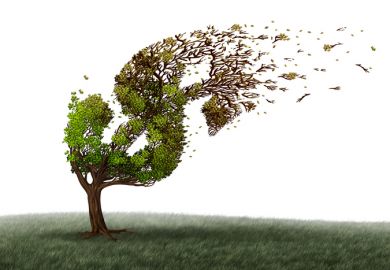Like Ireland, Sri Lanka is an island without a political consensus. The Sinhalese majority (74 per cent), which is mainly Buddhist, has lived on the island from as far back as the 5th century BC, while the Tamils (18 per cent), who are predominantly Hindus, and concentrated mainly in the north and east of the island, arrived soon after, in the 3rd century BC (with a later influx in the 19th century to work the tea plantations).
The history of the Sinhalese-Tamil relationship has alternated between episodes of peaceful co-existence and violent conflict - in recent times between the Government in Colombo and the LTTE (Tamil Tigers).
In 1956, eight years after Ceylon's independence from Britain, the Sinhala Only Language Act was passed, making Sinhala the official language of government and education. In 1972, the Act was entrenched constitutionally; at the same time, Buddhism became a state religion. At independence, the Tamils were disproportionately represented in government and the professions, at more than 35 per cent. However, the consequences of the Language Act were not merely corrective but severely disruptive.
Between 1956 and 1970, the employment of Tamils fell from 60 to 10 per cent in the professions, from 30 to 5 per cent in the administrative services, from 50 to 5 per cent in the clerical services and from 40 to a mere 1 per cent in the armed forces. In 1983, growing Tamil discontent exploded into a full-scale civil war that has now, following the Norwegian-brokered ceasefire of 2002, reignited, with a sea battle last month that left more than 45 dead.
Buddhism, the island's majority religion, is perhaps the only world religion that has never had a war fought in its name. At its centre lies the principle of karuna, compassion. Where then does the current war fit in with Sinhalese Buddhism? This is the subject of Buddhism, Conflict and Violence in Modern Sri Lanka , a collection of eight papers presented at a conference at Bath Spa University in 2002 and seven new essays, edited by Mahinda Deegalle, a practising Buddhist monk and academic. The book's aim is to examine the views on violence found in the Theravada scriptures, the Buddha's reasons for denouncing violence and, most importantly, the Buddhist message for today's world in transforming all forms of violence both within the individual and in society.
In his introduction, Deegalle reminds us of the key fact that in Sri Lanka violence is perpetuated in the name of nationhood, not religion. A point he makes in his reading of the Cakkavattisihanada sutta , which one might apply directly to Sri Lanka, is that this scripture suggests that the state has an important duty to provide sufficient means of earning wealth to all sections of society. Deegalle states that the roots of the current war lie in economic factors, linguistic friction and the question of opportunities. This increasingly public stance by some members of the sangha (the Buddhist monkhood) has resulted in a new development in Buddhist studies, leading to what is now called "engaged Buddhism", marked by the election of Buddhist monks to the Sri Lankan parliament, first in 2001 and then again in 2004.
However, two of Deegalle's suggestions require careful investigation: that Prabhakaran, the leader of the LTTE since the 1970s, is a Roman Catholic and not a Hindu - a comment the book sources to a discussion at the 2002 conference and not to any known authority - and also that there may exist a Christian conspiracy (corroborated by forced conversions to Christianity).
The picture is somewhat complicated. Prabhakaran is known to be a Hindu, a follower of Murugan (considered by Tamils to be the son of the god Siva and his consort Parvati), and the grandson of the owner/builder of a Siva temple; pictures of Prabhakaran's wedding show a Hindu ceremony. On the other hand, the LTTE has sought to eradicate casteism; all LTTE ceremonies are secular; they bury their dead, rather than cremate them in the Hindu manner, in keeping with an ancient Tamil custom of burying warriors; and Prabhakaran named his son Charles Anthony after the LTTE's first suicide bomber (his daughter has the distinctly Hindu name Dwaraka).
Of the 15 contributors, R. A. L. H. Gunawardana alone focuses on the language issue, making clear how the government's unwillingness to grant equal status to the Tamil language has prompted and aggravated the current situation. But Richard Gombrich, by reminding us of the harm the Language Act did to the Sinhalese as well as the Tamil community - it left non-English Sinhalese university graduates bereft of white-collar opportunities - cautions against a simplistic reading. Furthermore, by reminding us that the tradition of Buddhism in politics goes back to Indian Emperor Asoka in the 3rd century BC - a famous convert to Buddhism - Gombrich reveals a historical pattern. Even so, his statement that the current war is a defensive one for the Sinhalese privileges their psychological insecurity while turning a blind eye to Tamil unemployment and its tangible economic effects on the Tamil community. As the Cakkavattisihanada sutta shows, without economic justice society can fall into utter confusion.
John Clifford Holt, in his study of Hindu influences on Buddhism, shows how the two key Sri Lankan epics, the Mahavamsa and the Culavamsa (which posit Sri Lanka as the Buddha's chosen home for Buddhism after his death), with their intertwining of Buddhist myth, eulogy and history, are textual sources that "strain historical credulity". Nevertheless, the epics contain several references to Hinduism, including the accommodation of Hindu concepts by Buddhist kings, thus underlining Sri Lanka's once-pluralistic social structure.
Mahinda Palihawadana, in an engaging study of the Buddha's analysis of conflicts, identifies the role of flawed perceptions and the latent tendencies these give rise to. The Buddha encouraged the examination of one's own mental processes and taught how to handle perceptions so as to live without conflict. Palihawadana closes his chapter with a proposed catalogue of conflict-resolution measures supported by scripture. His focus on the wider ramifications of the individual's development is balanced by P. D. Premasiri's essay on the reality of Sri Lankan historiography. In this, there exists a distinct Sinhala-Buddhist group who have assigned themselves the role of protectors of the Buddha, thereby alienating the Tamils. Their view is echoed by Ananda Wickremeratne's declaring that there is no history, only historiography. The mathematician Nalin de Silva calls this nationalist ideology "Sinhalatva". But while many Sinhalese may identify with it, nowhere in Buddhist scripture is this sense of protecting the Buddha used to justify war.
Alvappillai Veluppillai, the only Tamil contributor, asks the crucial question: how could the "sons of Buddha" dedicated to non-violence have taken on the role of "sons of the soil". Gananath Obeyesekere, as if in reply, stresses the necessity of reading Buddhist nationalism in the context of Tamil provocations.
While most Sinhalese Buddhists remain non-violent on principle, the injustices bred by the Sinhala Only Language Act have certainly led to violence. And while the determination of the Tamils to wrest a fairer proportion of educational and economic opportunities for themselves is understandable, the methodology of the LTTE leader Prabhakaran, including suicide bombings, remains unacceptable. By opening up a sensitive subject to several perspectives, this book achieves, in an almost Buddhist manner, an even-handed success.
Dipli Saikia holds a PhD from Bristol University, which concerns the influence of the civil war on Sri Lankan literature.
Buddhism, Conflict and Violence in Modern Sri Lanka
Editor - Mahinda Deegalle
Publisher - Routledge
Pages - 7
Price - £75.00
ISBN - 0 415 35920 1
Register to continue
Why register?
- Registration is free and only takes a moment
- Once registered, you can read 3 articles a month
- Sign up for our newsletter
Subscribe
Or subscribe for unlimited access to:
- Unlimited access to news, views, insights & reviews
- Digital editions
- Digital access to THE’s university and college rankings analysis
Already registered or a current subscriber?



